New Unmanned Spacecraft Set To Launch
Air Force officials are scheduled to launch the US's newest and
most advanced unmanned re-entry spacecraft April 21 at Cape
Canaveral Air Station, Fl. The X-37B Orbital Test Vehicle will
provide a flexible space test platform to conduct various
experiments and allow satellite sensors, subsystems, components and
associated technology to be efficiently transported to and from the
space environment where it will need to function.
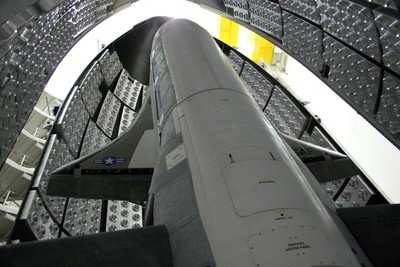
The X-37B will also prove new technology and components before
they are committed to operational satellites. The OTV is the first
vehicle since NASA's shuttle orbiter that has the ability to return
experiments to Earth for further inspection and analysis.
"The X-37B is the only self contained effort intended to be an
economically viable experimental test platform on-orbit for months
at a time and then return," said David Hamilton Jr., the Air Force
Rapid Capabilities office director. Mr. Hamilton explained the
X-37B as a risk reduction vehicle for space experimentation that
explores concepts of operation for a long-duration, reusable space
vehicle.
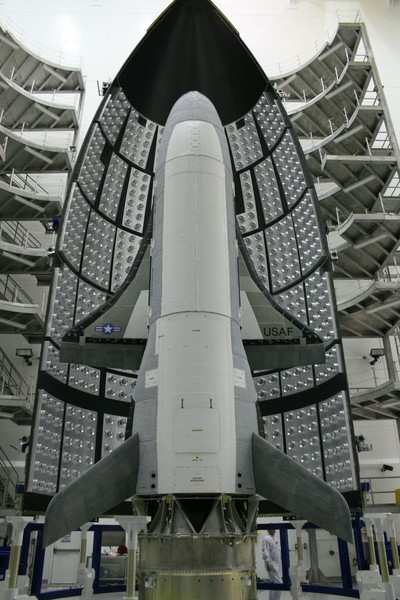
"The OTV has the potential to revolutionize how the Air Force
operates in space by making space operations more aircraft like and
adding in the capability for returnable plug-and-play experiments,"
Mr. Hamilton added. The X-37 program, while originally a NASA
initiative, is now led by Air Force Rapid Capabilities Office
officials, which expedite development and fielding of select
Defense Department combat support and weapons systems. AFRCO
officials are currently working on the X-37B program, building upon
early development and testing conducted by officials from NASA, the
Defense Advanced Research Projects Agency and the Air Force
Research Laboratory.
The X-37B's first flights will allow Air Force officials to
evaluate the vehicle's performance and ensure the components and
systems work the way they were designed.
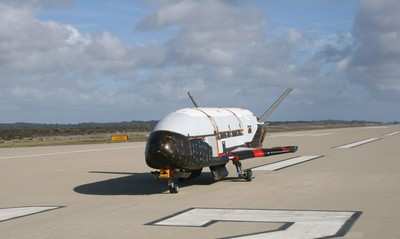
"There is much to learn in the first few flights on the
technologies used on this vehicle, how quickly it can be readied
for a re-flight, and on the operational utility," Mr. Hamilton
said. "We have started discussions with Air Force Space Command
(officials) to plan for the possibility for transition to an
operational capability, but the system first must prove its utility
and cost effectiveness during the test program."
The X-37B has a 270-day on-orbit capability and will be used to
test technologies including advanced guidance, navigation and
control, thermal protection systems, avionics and high temperature
structures and seals. Once the testing is complete, the OTV
de-orbits and lands autonomously.
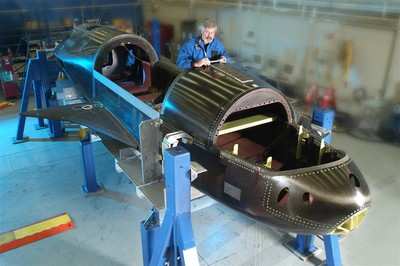
"While the X-37B is on orbit, it is like most satellites in that
there are operators monitoring telemetry and sending commands to
maintain the health of the spacecraft," said Lt. Col. Troy Giese,
the X-37B systems program director. "Upon being given the command
to return to Earth, the X-37B will automatically descend through
the atmosphere and land on the designated runway. There is no one
on the ground with a joystick flying it."
The X-37B is scheduled to land at Vandenberg Air Force Base,
Calif.
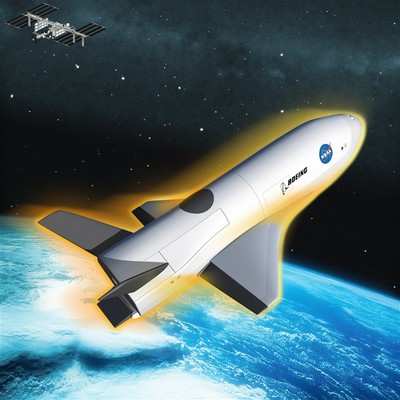
"The X-37B is an important step in the effort to make space
access more routine, affordable, and responsive," Mr. Hamilton
said. "The technologies and concepts of employment that are proven
by the Orbital Test Vehicle will be folded into development
programs that will provide capabilities for our warfighters in the
future." [ANN Salutes by Staff Sgt. Vanessa Young for the
story].
 Aero-News: Quote of the Day (04.28.25)
Aero-News: Quote of the Day (04.28.25) ANN's Daily Aero-Term (04.28.25): Decision Altitude (DA)
ANN's Daily Aero-Term (04.28.25): Decision Altitude (DA) ANN's Daily Aero-Linx (04.28.25)
ANN's Daily Aero-Linx (04.28.25) Airborne-Flight Training 04.24.25: GA Refocused, Seminole/Epic, WestJet v TFWP
Airborne-Flight Training 04.24.25: GA Refocused, Seminole/Epic, WestJet v TFWP Aero-News: Quote of the Day (04.29.25)
Aero-News: Quote of the Day (04.29.25)







